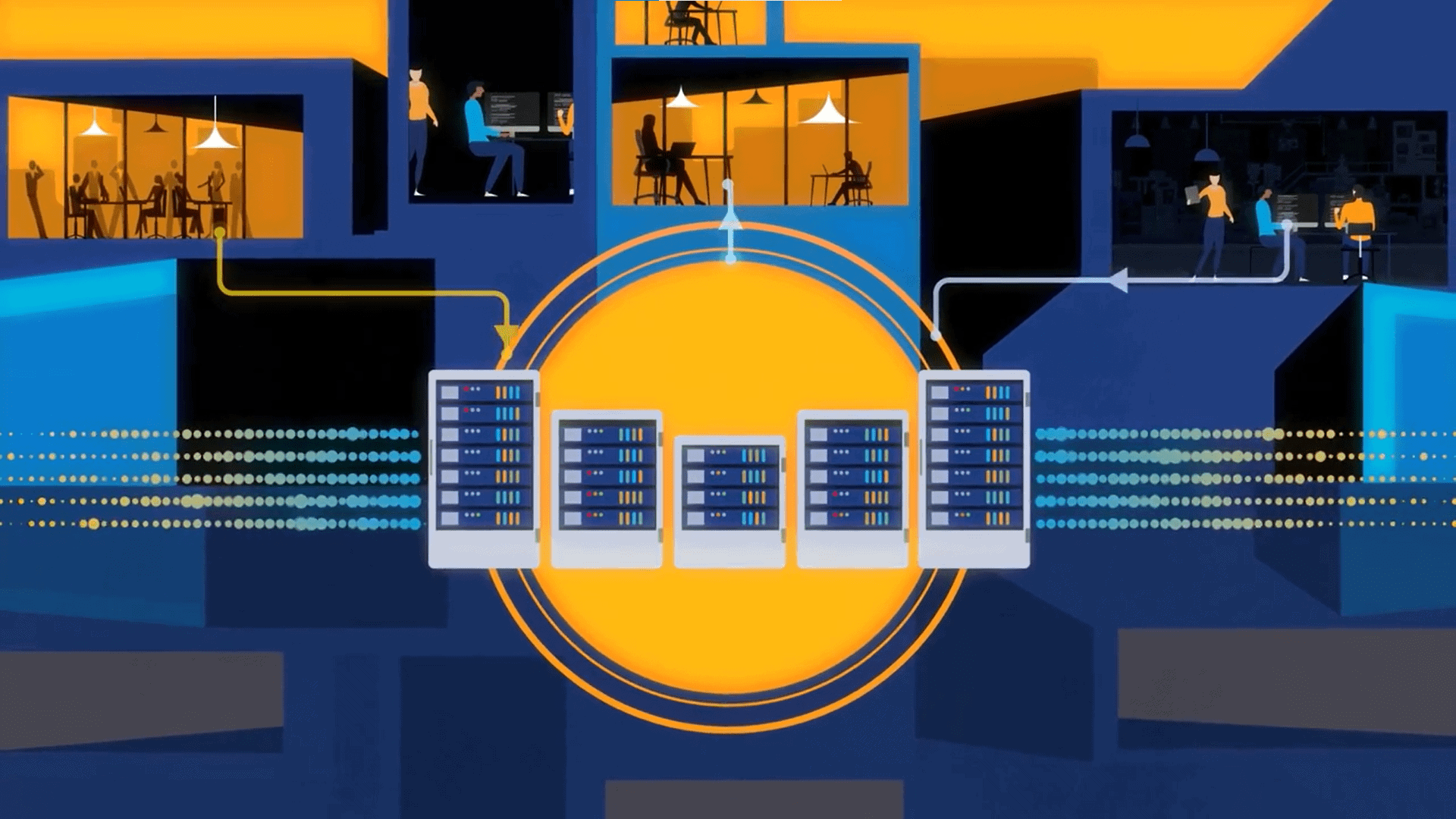
Meeting user expectations with personalization, embedded finance, security, and sustainability creates a competitive advantage that attracts NeoBank customers and, most importantly, drives profitability.
The global neobank market is experiencing rapid growth: projections indicate that it will reach $230.55 billion in 2025, with a CAGR of 40.29% by 2034. This comes as no surprise — fintech and digitalization are transforming financial habits, and instead of traditional banks, consumers now expect innovative, convenient, and easy-to-use solutions directly on their smartphones.
That’s why many fintech startups focus on launching neobanks — it’s much easier than building a full-fledged bank while leaving ample room for innovation and creative solutions. However, only a small percentage of startups manage to survive in the market, and this isn’t always tied to the number of users. The key question: what distinguishes a successful neobank from one that quickly disappears?
Despite the appeal of digital banking, companies face several challenges:
- High operational costs – building a neobank requires integrating multiple third-party services. Fees for BaaS, payment systems, and regulatory compliance create profitability challenges. This doesn’t even include the significant costs of developing and supporting the mobile application.
- Limitations of BaaS (Banking-as-a-Service) – many neobanks operate on traditional banking infrastructure and often rely on multiple BaaS providers. These services can be technologically outdated and challenging to work with. However, when building a neobank, you must align your technical solutions and product features with what these providers can deliver and what level of agility they have.
- Profitability issues – this is a challenge for any startup, but even more so for neobanks. Simon-Kucher & Partners data says that fewer than 5% of neobanks reach profitability. One might assume this is due to a lack of user demand, but a study of the 25 largest neobanks revealed that only two of them have become profitable. Most of them earn less than $30 per year per customer (annual ARPU).
- Regulatory uncertainty – integration of cryptocurrencies and international financial transactions remains particularly complex from a regulatory perspective.
- Customer trust and retention – users expect reliability and security, but converting new customers and maintaining long-term loyalty continue to be a major challenge.
In short, the key difficulty lies in combining effective technical solutions with a solid strategy for user acquisition and profitability. Below are the key trends relevant to neobanks in 2025 that will enhance their value proposition for both users and investors.
AI in Neobanking: Smart personalization
AI enables the personalization of financial services, benefiting both businesses and users.
For customers, AI-driven personalization means better user experience: tailored recommendations for spending and savings, gamification elements, personalized financial advice, and detailed reports on financial activity. Such an app encourages users to engage more, explore their financial habits, and plan their finances more effectively.
For businesses, AI serves as a powerful tool for behavioral analytics, helping to understand user interactions within the app, identify the most used features and points to improve them and optimize retention strategies. Additionally, AI can be leveraged to promote specific product offerings. For example, it can help increase the adoption of savings accounts among existing users.
Security without friction: How modern fraud prevention works
Security breaches affected 39% of financial businesses in 2024 alone, as financial data remains a prime target for cybercriminals. Ensuring security is crucial not only for business success but also for earning user trust.
In 2025, fintech products must not only effectively combat fraud but do so seamlessly without inconveniencing users. Overly complex authentication processes or manual verifications can drive customers away, which is why businesses need intelligent, automated solutions. These include:
- Biometric authentication – instead of memorizing passwords or entering verification codes, users can authenticate using their unique biological data (e.g., Face ID or fingerprint scanners). Biometric data is stored in an encrypted format on the user’s device, making it impossible for hackers to steal.
- Automated KYC solutions and fraud detection – user onboarding is a critical stage for fintech products. To prevent customers from going away due to long and complicated verification processes, companies are automating KYC (Know Your Customer) procedures. Users simply upload a document photo and a selfie, and AI verifies their identity automatically. The data is then cross-checked against global databases (sanction lists, banking blacklists, fraud databases). AI systems detect forged documents, Photoshop manipulation, or bot accounts. Automation reduces registration time from several days to just a few minutes while blocking fraudulent attempts.
- Multi-Factor Authentication (MFA) and passkeys – traditional passwords no longer provide that level of security. Businesses are adopting MFA, which adds an extra layer of verification. After entering a password, users confirm their login via OTP codes, push notifications, or biometrics. Another emerging technology that is replacing passwords is Passkeys. Users simply authenticate with Face ID or Touch ID, and the device generates a unique cryptographic key. This is crucial, as MFA and passkeys are virtually immune to phishing and brute-force attacks.
- Transaction monitoring and fraud prevention – real-time transaction analysis detects suspicious activity before fraud transactions occur. AI models assess user behavior — if someone suddenly changes location or makes unusually large transfers, the transaction is flagged or blocked. Additionally, third-party transaction monitoring systems (such as Sumsub or Unit21) analyze payments for fraud indicators in real time.
Security in fintech is no longer about choosing between protection and convenience. By leveraging biometrics, AI analytics, multi-factor authentication, and automated monitoring systems, companies can minimize fraud while maintaining a seamless user experience.
The main trend is invisible security. Users hardly notice these security measures, yet their funds and data remain under protection.
Embedded finance: Banking within ecosystems
The concept of embedded finance is fundamentally reshaping when, where, and how people interact with financial services. The 2023 Fintech Waves Report reveals that 96% of European businesses plan to implement embedded payments, while 94% intend to adopt embedded banking solutions. But why should they choose your competitors instead of you?
At its core, embedded finance integrates banking services, payments, or lending directly into non-financial products and services. This allows users to access financial tools within the applications and platforms they already use, enhancing convenience while making financial transactions faster and more accessible.
One of the most common examples of this is the Buy Now, Pay Later (BNPL) model. Imagine partnering with a marketplace that offers users a seamless financing option through your bank right within the app. Everyone benefits from this integration —
- The marketplace, as attractive financing terms increase, the likelihood of customers completing their purchases.
- Your business, as you generate revenue from these transactions.
Without a doubt, embedded finance is one of the most effective monetization strategies for neobanks. A key takeaway? Develop a well-structured integration model and pitch your proposal to relevant services as soon as possible.
Alternative lending models & financial inclusion
Financial inclusion is a global initiative aimed at ensuring access to financial services for all, including people who are excluded due to traditional banking requirements.
Neobanks play a crucial role in financial inclusion by leveraging digital solutions to simplify lending processes and reduce dependency on bureaucratic procedures. A growing trend in this field is alternative lending models that assess creditworthiness beyond traditional credit scores. Instead of relying solely on standard scoring systems, these models analyze transaction history, behavioral patterns, and spending habits to evaluate risk more accurately.
This approach is particularly beneficial for New-to-Credit (NTC) customers — those who have never used banking credit before — allowing them to access financing and gradually build their credit history.
Financial inclusion drives economic growth by enabling small businesses to secure funding and giving consumers access to credit products. Traditional banks often impose rigid, unfavorable requirements — such as fixed installment plans or strict income verification — making credit inaccessible for many.
For neobanks, designing lending mechanisms that are flexible, user-friendly, and secure is key. This not only enhances customer acquisition but also drives profitability in the long run.
See also: Top 10 AI Trends for the FinTech Industry in 2024
UX & convenience: The evolution of user experience
Modern neobank users expect full control over their finances. A self-service interface has become the standard, enabling customers to manage accounts, loans, and investments without contacting support. This approach saves time, reduces operational burdens for banks, and enhances customer loyalty.
An intuitive design and a deep understanding of the user journey play a crucial role here. Users dislike complex, cluttered interfaces, and neobanks that fail to offer seamless, autonomous financial management risk losing their competitive edge.
Early generations of neobanks often overlooked design, and some still rely on outdated interfaces, making them seem like digital dinosaurs. However, there’s no single formula for the perfect UI/UX. While some audiences prefer a minimalist, ultra-simplified design, Gen Z may appreciate gamified, vibrant experiences reminiscent of Mario-style interactions. Identifying the ideal design requires deep audience analysis and behavioral insights rather than simply following trends.
Cryptocurrency solutions in neobanks
Since late 2021, cryptocurrency ownership has nearly doubled. By 2025, around 28% of American adults — approximately 65 million people — are expected to hold digital assets. Additionally, 14% of non-investors plan to enter the crypto market this year, while 67% of existing holders intend to expand their portfolios.
Experts predict that cryptocurrency will continue to integrate into everyday life. The U.S. government has even signed an executive order to establish a strategic crypto reserve. Today, digital assets are already being used for everyday purchases in many countries. For example, in the U.S., the grocery chain Whole Foods accepts Bitcoin and other cryptocurrencies via the Flexa app.
However, managing crypto assets through third-party platforms remains inconvenient. Users seek an all-in-one solution where their financial tools are consolidated. In 2025, the highest potential belongs to neobanks that integrate crypto wallets and exchanges directly into their mobile apps, simplifying digital asset management within a familiar banking environment.
ESG & green financial products
Corporate Social Responsibility (CSR) is no longer just a trend — it’s a necessity for businesses that aim to attract customers and investors and remain competitive. Today’s consumers expect companies to do more than generate profit; they want businesses to actively address social and environmental challenges.
Research highlights the growing importance of CSR:
- 78% of investors consider social impact when making decisions.
- 91% of consumers expect businesses to contribute beyond profit-making. While 94% of Gen Z believe companies should tackle social and environmental issues.
- 90% of consumers trust companies that demonstrate social responsibility, and 88% of people want transparency on a company’s CSR efforts.
- Customer satisfaction increases by 23% when businesses focus on social responsibility.
Neobanks can integrate social responsibility into their business models by aligning with one of the UN Sustainable Development Goals (SDGs) that matches their values. Many focus on green banking, a concept that prioritizes environmental initiatives.
Popular ESG-driven neobank initiatives include:
- Eco-friendly credit cards made from recycled materials.
- Preferential terms for environmentally responsible businesses.
- Donations from transactions, where a portion of each payment supports sustainability projects.
- Cashback for charity, allowing users to donate their rewards.
- Tree-planting initiatives, such as planting a tree for every 100 transactions.
For example, Ukraine’s Monobank lets users donate cashback to charity instead of keeping it. Users can choose causes like helping sick children or homeless animals and track their contributions monthly.
Neobanks that adopt such initiatives enhance their reputation and build customer loyalty, particularly among those who prioritize values and social impact. Moreover, 90% of consumers are willing to switch to more sustainable brands, making ESG a competitive advantage in the market.
How Not to Fail in 2025: Key Takeaways
Find your niche
The market may seem overcrowded, and the number of profitable neobanks is indeed low. However, there’s still plenty of room for innovation—the key is to clearly define the problem you solve and the value you bring to users.
Choose the right tech infrastructure
Your technology stack—including BaaS platforms and card providers—will determine your speed to market, scalability, and long-term flexibility. The right partners can accelerate growth and prevent future technical bottlenecks.
Integrate key trends
Personalization, embedded finance, security, and sustainability aren’t just buzzwords—they shape user expectations and directly impact profitability. Revenue from services like integrations, lending, and subscriptions can make up a significant portion of a neobank’s earnings.
User trust, built through strong security standards and CSR initiatives, helps with acquisition and retention—preventing users from switching to competitors.
Ultimately, success in 2025 isn’t just about a great idea — it’s about executing it right. You’re not just building a product; you’re creating a competitive advantage that attracts users and, most importantly, drives profitability.





























